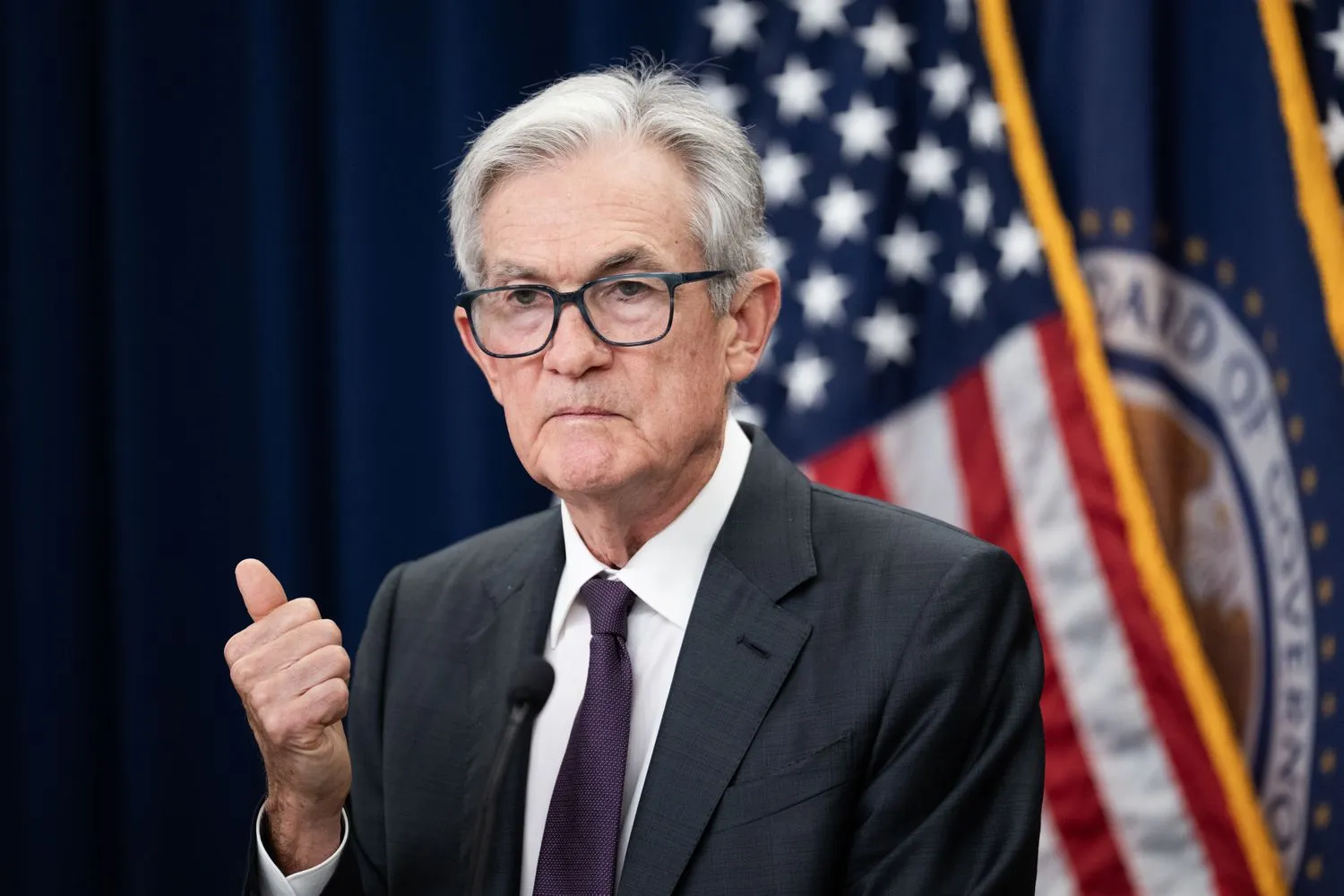The global economy is confronting an unprecedented debt crisis as total worldwide debt has surged to a record-breaking $337.7 trillion at the end of the second quarter, according to a bombshell report released Thursday by the Institute of International Finance (IIF). This staggering increase of over $21 trillion in just six months represents a debt accumulation pace not witnessed since the height of the COVID-19 pandemic, raising urgent questions about global financial stability and the sustainability of current fiscal policies.
Build the future you deserve. Get started with our top-tier Online courses: ACCA, HESI A2, ATI TEAS 7, HESI EXIT, NCLEX-RN, NCLEX-PN, and Financial Literacy. Let Serrari Ed guide your path to success. Enroll today.
A Crisis of Historic Proportions
The scale of this debt explosion has sent shockwaves through financial markets and policy circles worldwide. The IIF’s Global Debt Monitor reveals that the first-half surge was “comparable to the surge seen in H2 2020, when pandemic-related policy responses drove an unprecedented buildup in global debt.” This comparison is particularly alarming given that the world is no longer in the midst of a global health emergency requiring massive fiscal stimulus.
The debt surge has been driven by a confluence of factors including easing global financial conditions, a weakening U.S. dollar that has declined 9.75% since the start of the year against major trading partners, and increasingly accommodative stances from major central banks. However, unlike the pandemic-era debt buildup that served a clear crisis response purpose, the current accumulation raises fundamental questions about fiscal discipline and long-term economic sustainability.
China, France, the United States, Germany, Britain, and Japan recorded the largest increases in debt levels in U.S. dollar terms, though some of this increase can be attributed to the weakening dollar. Nevertheless, the underlying trend toward higher debt levels across both developed and emerging economies points to a systemic shift in global fiscal dynamics that could have far-reaching consequences.
Emerging Markets Face Perfect Storm
The crisis is particularly acute for emerging markets, which face what experts are calling a “perfect storm” of challenging conditions. Total emerging market debt rose by $3.4 trillion in the second quarter alone to a record high of over $109 trillion, while the debt-to-GDP ratio reached a new record of 242.4% following a downward revision from the previous report in May.
Most alarmingly, emerging markets are facing an unprecedented refinancing challenge with nearly $3.2 trillion in bond and loan redemptions expected in the remainder of 2025. This massive wall of maturing debt comes at a time when global financial conditions are tightening and borrowing costs are rising across many jurisdictions.
The situation has already manifested in real-world financial stress. In April 2025, Angola experienced a dramatic crisis when dollar bonds tumbled, triggering a $200 million margin call that pushed yields near 15 percent, effectively shutting the country out of global capital markets. This incident exemplifies the vulnerability of emerging market economies to sudden capital flight and liquidity shortages.
The Return of Bond Vigilantes
Financial markets are witnessing the return of what economists call “bond vigilantes“—investors who punish governments they perceive as fiscally irresponsible by selling their bonds and driving up borrowing costs. The IIF specifically warned of potential intensification of fiscal strains in countries such as Japan, Germany, and France, urging caution over these market disciplinarians.
The bond vigilante phenomenon has already manifested in several key markets. Bond market liquidity is now at its weakest since the 2011 Eurozone debt crisis, approaching levels last seen during the 2008 financial crisis. Japan’s sovereign bond market is facing its worst liquidity crisis on record, with Bloomberg’s liquidity index reaching unprecedented levels.
European Central Bank research has shown that investment funds are leading the charge as modern bond vigilantes, accounting for most net sales of sovereign bonds during times of stress while domestic households and insurance companies often step in to buy the bonds they sell. This dynamic creates a self-reinforcing cycle where international capital flight can rapidly destabilize government financing.
The vigilante effect has been particularly pronounced in developed markets this year, with G-7 10-year yields near their highest since 2011. In the United States, 30-year Treasury yields have exceeded 5%—a level not seen since 2007—following Moody’s downgrade of the U.S. sovereign credit rating and weak demand at Treasury auctions.
Central Bank Independence Under Threat
One of the most concerning aspects of the current debt crisis is its potential impact on central bank independence and monetary policy effectiveness. The IIF report highlighted particular concerns about U.S. debt dynamics, noting that short-term borrowing now accounts for approximately 20% of total government debt and roughly 80% of Treasury issuance.
This growing reliance on short-term debt financing creates what economists call a “debt trap” where governments become increasingly vulnerable to interest rate changes and refinancing risks. More troubling, the IIF warned that this trend “could heighten political pressure on central banks to keep rates low, potentially threatening monetary policy independence.”
The implications of compromised central bank independence extend far beyond monetary policy. When central banks lose credibility as inflation fighters, it can lead to a loss of confidence in the currency, higher long-term interest rates, and ultimately more expensive government financing—creating a vicious cycle of fiscal and monetary instability.
This concern has taken on particular urgency given recent political developments. The Committee for a Responsible Federal Budget estimates that proposed tax-cut measures could add $7.75 trillion to the U.S. national debt over the next decade, pushing the debt-to-GDP ratio above 140% by 2034.
Global Financial Architecture Under Stress
The debt crisis is exposing fundamental weaknesses in the global financial architecture that have been building for more than a decade. Since the 2008 financial crisis, financial intermediation has pivoted from lending to private sector borrowers to claims on government, especially in the form of sovereign bonds.
This shift has created what experts call a “sovereign-bank doom loop” risk, where financial institutions become increasingly exposed to government debt, making them vulnerable to sovereign debt crises. If sovereign bonds lose value due to declining government creditworthiness, financial institution balance sheets suffer, potentially forcing governments to bail out their financial systems—adding even more debt to already strained public finances.
The crisis has been exacerbated by the post-COVID persistence of large fiscal deficits. The International Monetary Fund reports that the global fiscal deficit continues to average around 5% of GDP, reflecting legacy costs from pandemic responses combined with rising net interest costs. Many governments continue running what amounts to recessionary budget deficits despite having exited recessions years ago.
One decision can change your entire career. Take that step with our Online courses in ACCA, HESI A2, ATI TEAS 7, HESI EXIT, NCLEX-RN, NCLEX-PN, and Financial Literacy. Join Serrari Ed and start building your brighter future today.
Regional Variations and Vulnerabilities
The debt crisis is manifesting differently across regions, with some areas facing particularly acute challenges. Looking at debt-to-GDP ratios—a key indicator of debt sustainability—Canada, China, Saudi Arabia, and Poland saw the sharpest increases in the first half of 2025, while Ireland, Japan, and Norway managed to reduce their ratios.
In emerging markets, the situation varies dramatically by region. Asia and Oceania hold 24% of global public debt, followed by Latin America and the Caribbean at 5%, and Africa at just 2%. However, the burden varies significantly based on the price and maturity of debt financing available to different countries, often reflecting inequalities embedded in the international financial architecture.
The most vulnerable emerging market economies are those with significant dollar-denominated debt exposure. As the Atlantic Council notes, the sovereign and private debt of emerging markets is often denominated in U.S. dollars, creating currency mismatches that amplify financial stress when the dollar strengthens or global liquidity conditions tighten.
Recent examples include Sri Lanka, where dollar appreciation and heightened global risk led to an over 50% decrease in bond values in just three months during the COVID-19 pandemic, ultimately locking the country out of international markets. Similar dynamics played out in Pakistan in 2022, where dwindling foreign exchange reserves and increased debt service costs following dollar appreciation led to reliance on poorly negotiated Chinese loans.
Market Dynamics and Liquidity Concerns
The scale of the current debt mountain is creating unprecedented challenges for global bond markets. The IMF’s Global Debt Database shows that total global debt remains above 235% of world GDP, with public debt alone reaching nearly 93% of global output.
Bond market functioning is becoming increasingly strained under the weight of massive issuance requirements. In the United States alone, there was nearly $14 trillion in debt rolling over from G10 countries earlier in 2025, creating enormous supply pressures in fixed-income markets.
The liquidity crisis is particularly acute in Japan, where sovereign bond market liquidity has reached its worst levels on record. Bloomberg’s liquidity index for Japanese debt with maturities of one year or longer has soared to unprecedented levels, while long-term Japanese bond yields are reaching historic highs despite the Bank of Japan’s ultra-accommodative monetary policy stance.
Inflationary Pressures and Policy Dilemmas
The massive debt buildup is creating complex policy dilemmas for central banks and governments worldwide. Traditional monetary policy tools are becoming less effective as debt levels constrain policy options and create conflicting pressures on central bank decision-making.
Rising debt service costs are consuming increasing portions of government budgets, limiting fiscal space for productive investments and crisis response capabilities. Half of developing countries were paying at least 6.5% of export revenues to service external public debt in 2023, with debt service on external public debt reaching $487 billion globally.
The situation creates a particularly challenging environment for monetary policy. If central banks raise interest rates to combat inflation, they worsen government debt dynamics and potentially trigger financial instability. Conversely, if they keep rates low to support government financing, they risk losing credibility as inflation fighters and may actually worsen long-term fiscal dynamics.
This policy trilemma has already manifested in several jurisdictions. The European Central Bank has noted that government bond market functioning demonstrated resilience during recent volatility but warned that continued stability remains essential for financial system health.
Long-term Sustainability Questions
The current debt trajectory raises fundamental questions about long-term economic sustainability that extend far beyond immediate financing concerns. With global public debt having reached $102 trillion in 2024 and expected to approach 100% of global GDP by 2030, the world is entering uncharted territory in terms of debt levels relative to productive capacity.
The sustainability equation becomes particularly challenging when considering demographic trends, climate change adaptation costs, and infrastructure investment needs. Aging populations in developed economies will require increased health and pension spending just as debt service costs are rising. Meanwhile, developing countries face enormous infrastructure and climate adaptation financing needs that could add trillions more to global debt levels.
The OECD’s Global Debt Report 2025 highlights that addressing these challenges will require fundamental reforms to the international financial architecture, including more inclusive and development-oriented financing mechanisms, enhanced liquidity provision during crises, and effective debt workout mechanisms.
Policy Responses and Reform Imperatives
Addressing the global debt crisis will require coordinated action across multiple dimensions. The United Nations Conference on Trade and Development has called for comprehensive reform of the international financial architecture, emphasizing that “developing countries must not be forced to choose between servicing their debt or serving their people.”
Key reform priorities include making the international financial system more inclusive and development-oriented, enhancing the availability of liquidity during times of crisis, creating effective debt workout mechanisms that address current deficiencies, and providing more and better concessional finance and technical assistance to support countries in tackling high debt costs.
At the national level, governments need to prioritize gradual fiscal adjustments within credible medium-term plans to reduce public debt while avoiding crowding out private borrowing and investment. This requires difficult political choices about spending priorities, tax policies, and structural reforms to boost economic growth and reduce uncertainty.
Central banks face the delicate task of maintaining price stability while supporting financial system stability in an environment of unprecedented debt levels. This may require new policy tools and frameworks that can address the complex interactions between monetary policy, fiscal policy, and financial stability.
Market Implications and Investment Strategies
The evolving debt crisis is reshaping global investment strategies and market dynamics in fundamental ways. Morgan Stanley’s fixed income outlook notes that bond market volatility returned sharply in recent months, with yields rising worldwide and credit spreads widening, albeit less aggressively than government bond yields.
Gold has been breaking out to new highs in nearly every major currency as investors seek safe-haven assets amid the debt crisis and declining bond market liquidity. The precious metal’s performance reflects growing concerns about currency debasement and the long-term sustainability of current fiscal and monetary policies.
For fixed-income investors, the environment presents both significant risks and opportunities. Higher yields on government bonds offer improved income prospects for the first time in years, but the underlying credit and duration risks have increased substantially. Credit selection and active management have become more critical as the probability of sovereign and corporate defaults rises.
The Path Forward
The global debt crisis of 2025 represents a defining moment for the world economy that will likely shape policy discussions and market dynamics for years to come. With debt levels reaching unprecedented heights and bond vigilantes returning to discipline fiscal profligacy, governments and central banks face increasingly constrained policy options.
The $3.2 trillion in emerging market debt redemptions expected in the remainder of 2025 will provide a crucial test of global financial stability. How successfully these refinancing needs are met will likely determine whether the current debt crisis remains manageable or escalates into a full-scale financial emergency.
Success in navigating this crisis will require unprecedented levels of international coordination, political will for difficult reforms, and innovative policy solutions that can address the fundamental imbalances that have built up over more than a decade. The alternative—a disorderly unwinding of global debt imbalances—could trigger the kind of financial crisis that makes the 2008 experience look modest by comparison.
As the world grapples with this $338 trillion debt mountain, the choices made in the coming months will reverberate through the global economy for decades to come. The return of bond vigilantes serves as a stark reminder that financial markets remain the ultimate arbiters of fiscal sustainability, and their judgment can be swift and unforgiving when governments lose credibility.
Ready to take your career to the next level? Join our Online courses: ACCA, HESI A2, ATI TEAS 7 , HESI EXIT , NCLEX – RN and NCLEX – PN, Financial Literacy!🌟 Dive into a world of opportunities and empower yourself for success. Explore more at Serrari Ed and start your exciting journey today! ✨
Track GDP, Inflation and Central Bank rates for top African markets with Serrari’s comparator tool.
See today’s Treasury bonds and Money market funds movement across financial service providers in Kenya, using Serrari’s comparator tools.
Photo source: Google
By: Montel Kamau
Serrari Financial Analyst
26th September, 2025
Article, Financial and News Disclaimer
The Value of a Financial Advisor
While this article offers valuable insights, it is essential to recognize that personal finance can be highly complex and unique to each individual. A financial advisor provides professional expertise and personalized guidance to help you make well-informed decisions tailored to your specific circumstances and goals.
Beyond offering knowledge, a financial advisor serves as a trusted partner to help you stay disciplined, avoid common pitfalls, and remain focused on your long-term objectives. Their perspective and experience can complement your own efforts, enhancing your financial well-being and ensuring a more confident approach to managing your finances.
Disclaimer: This article is for informational purposes only and does not constitute financial advice. Readers are encouraged to consult a licensed financial advisor to obtain guidance specific to their financial situation.
Article and News Disclaimer
The information provided on www.serrarigroup.com is for general informational purposes only. While we strive to keep the information up to date and accurate, we make no representations or warranties of any kind, express or implied, about the completeness, accuracy, reliability, suitability, or availability with respect to the website or the information, products, services, or related graphics contained on the website for any purpose. Any reliance you place on such information is therefore strictly at your own risk.
www.serrarigroup.com is not responsible for any errors or omissions, or for the results obtained from the use of this information. All information on the website is provided on an as-is basis, with no guarantee of completeness, accuracy, timeliness, or of the results obtained from the use of this information, and without warranty of any kind, express or implied, including but not limited to warranties of performance, merchantability, and fitness for a particular purpose.
In no event will www.serrarigroup.com be liable to you or anyone else for any decision made or action taken in reliance on the information provided on the website or for any consequential, special, or similar damages, even if advised of the possibility of such damages.
The articles, news, and information presented on www.serrarigroup.com reflect the opinions of the respective authors and contributors and do not necessarily represent the views of the website or its management. Any views or opinions expressed are solely those of the individual authors and do not represent the website's views or opinions as a whole.
The content on www.serrarigroup.com may include links to external websites, which are provided for convenience and informational purposes only. We have no control over the nature, content, and availability of those sites. The inclusion of any links does not necessarily imply a recommendation or endorsement of the views expressed within them.
Every effort is made to keep the website up and running smoothly. However, www.serrarigroup.com takes no responsibility for, and will not be liable for, the website being temporarily unavailable due to technical issues beyond our control.
Please note that laws, regulations, and information can change rapidly, and we advise you to conduct further research and seek professional advice when necessary.
By using www.serrarigroup.com, you agree to this disclaimer and its terms. If you do not agree with this disclaimer, please do not use the website.
www.serrarigroup.com, reserves the right to update, modify, or remove any part of this disclaimer without prior notice. It is your responsibility to review this disclaimer periodically for changes.
Serrari Group 2025












